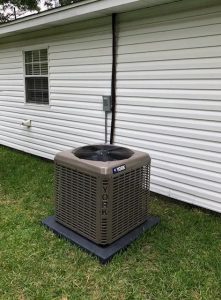 How Do HVAC Systems Work?
How Do HVAC Systems Work?
The heating, ventilation and air conditioning (HVAC) system is an important part of your home. It helps keep you cool during the summer and warm during the winter. Your HVAC system includes a furnace, an air conditioner and ductwork to deliver both hot and cold air. Understanding how it works can help you diagnose problems and maintain your system better.
Cooling
A cooling system, which works like the cooling system in a car, transfers heat to coolant or antifreeze that is then circulated around a radiator. This process dissipates excess heat and prevents the engine from overheating. The cooling system is also responsible for removing extra humidity from the air. This helps keep occupants comfortable and prevents mold and mildew growth. It also allows airflow to circulate throughout a space, which is important for maintaining the desired temperatures.
Ventilation
A well-designed ventilation system can help maintain a comfortable indoor climate without causing strain on the HVAC system. The ventilation system helps remove stale or poor air, and supplies fresh air to the space. For example, when air moves through the ducts of a ventilation system, it is filtered to remove dust and allergens. This process can improve indoor air quality and lower energy bills. In many cases, these ventilation systems are designed with sensors that measure and control air quality. These can be used to set off alarms or shut the system off if certain readings are detected. Additionally, ventilation systems can be both mechanical or passive. For environments where a more active approach is necessary, mechanical ventilation is the preferred choice. Passive installations are often ideal for hybrid solutions or situations where it is not possible to install a mechanical unit.
Heating
Heating systems use fuel such as natural gas, oil, or electricity to create heat that is dispersed through water circulating in pipes or forced air through ductwork. Thermostats regulate the system’s operation to maintain a consistent home temperature. A hot-water or steam heating system heats the water first in a boiler that burns a fuel such as natural gas, oil, or coal. The heated water then travels through a series of radiators throughout the house that radiate thermal energy to the air around them. The cool water is then returned to the boiler where it is heated again. This cycle repeats until the whole house is warmed up. A radiant-heat system uses a pipe to transfer thermal energy from the hot water to baseboard convectors that consist of a copper tube running through a row of metal fins. The system fits more easily between studs than a duct-filled with air, and it can be installed beneath wood-frame floors.
Thermostat
When a thermostat senses the temperature of a room, it tells the heating or cooling system to turn on or off. Some thermostats are mechanical, and others are digital. A mechanical thermostat works by using a bimetallic strip that expands or contracts based on the temperature of the room. It takes time for this strip to react and a significant amount of power is required to change its resistance. Another type of thermostat uses a pair of metal discs and a gas-filled bellows between them to detect the temperature. The bellows expand when the room gets warm and pushes the discs apart. These are more sensitive than the bimetallic strips and they also react faster to changes in the room’s temperature. However, they also take a long time to cool down. Therefore, they may become irritating in a large, uninsulated house. You can avoid this problem by placing your thermostat towards the center of the home, preferably on an interior wall.
